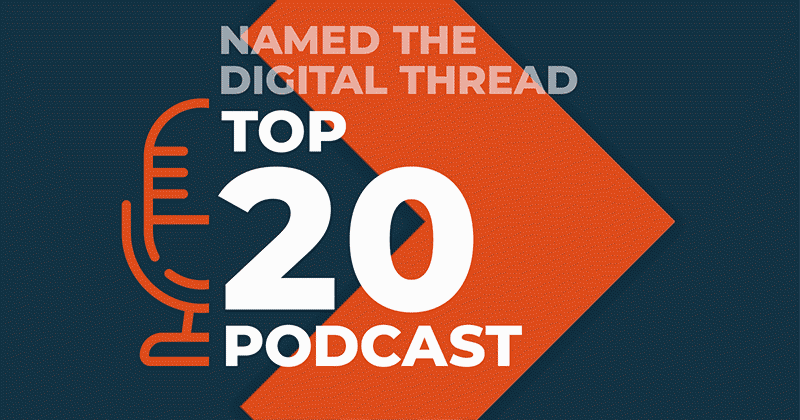Value Vector:
The CDO Imperative - Understanding Organizational Readiness
Ed Maguire

The Chief Digital Officer’s leadership is key to success as digital has a transformational impact within and beyond the organization.
In this final installment of our three-part blog series exploring the critical considerations for any company embarking on Internet of Things (IoT)-enabled growth, we examine how the new Chief Digital Officer (CDO) leads the convergence of operational and information technology along with its transformational impact across the ecosystem.
Building on our previous blogs, where we explored how to leverage the connected industry ecosystem for monetizing and delivering connected solutions, we look into the changes your business should expect through this transformation and the cultural considerations of the CDO leading this change.
Who owns IoT within the organization?
The Connected Industry will impact all areas of an organization, from finance to operations, customer services, sales and IT and from the board to the front-line. As the traditional silos of your organization diminish, and more cross functional practices become the norm, Digital Transformation will need to be an imperative across your entire organization.
Typically, such initiatives commence as centrally owned departments, avoiding major disruption to the day-to-day business as the organization learns and tests the market. This approach works as long as it isn't implemented upfront under the understanding that it will become a core pillar of the growth of the business. Buy-in from the wider business will be difficult to gain at a later stage when, in many cases, competitive strategies within the organization will have already commenced.
On the flip side, rolling out a digital strategy across the organization upfront will be disruptive. Buy-in will be lost as the cycles of learning associated with innovation affect the tactical business.
The right leadership
Finding a balance that works for the organization will be the key to success: learning cycles and marketing testing can be accelerated within an incubated environment with the full support and transparency of the wider organization. A fully aligned transformation strategy will help tie it all together.
In fact, this aligned transformation strategy is essential for your success in the Connected Industry. It will be driven by the right leaders and leadership team, demonstrating a blend of extensive domain knowledge, innovative thinking and strategic agility. After all, your IoT strategy must be leadership endorsed, and widely communicated to ensure success is not a notional way point, but a prescriptive and measurable target.
Understanding how day-to-day roles change
As your business becomes more connected, transparency will increase across both your internal organization and wider ecosystem. While this will reduce some of the traditional organization challenges associated with silos and misaligned strategies. It will also affect how you both lead and inform your teams.
In fact, one of the biggest challenges faced by traditional organizations embarking on IoT-enabled growth is the need to evolve the organization to meet the needs of IoT business models. There is an important human consideration that should be addressed as relationships change, altering the dynamics across the business for which traditional process and control may no longer be effective.
The top three challenges your organization will face are:
1) Skills: Ensuring employees' technical skills are kept current with leading technologies and ‘thinking’ skills are adapted to the new the transformation. In fact, the biggest skill employees will need to learn or embrace is ‘connected thinking’: a new way of thinking and acting based on associating and trusting information and a new way of predicting based on a blend of data and experience outcomes.
2) Pace: Ensuring employees don't get overwhelmed with the speed at which the Connected Industry has the potential to operate is essential. We talk about organizational ecosystems, but equally important are employee ecosystems and ensuring they are able to collaborate effectively.
3) Decision making: With the transparency of the Connected Industry, employees will be faced with new data to base their decision making on. This will be welcoming to some, but daunting for others. The organization is responsible for ensuring employees are positioned to both understand and trust the data, driving confidence in decision making.
You will also face these same challenges across your wider ecosystem. Collaborating with customers and suppliers to determine how best to be organized to serve each other is an effective way to learn based on experience, which leads to faster and quality outcomes.
Seek advice
External advisory support from well-connected business partners that are interacting on a daily basis with the larger Connected Industry ecosystem will provide you insights, guidance and challenges - all of which are required for effective leadership of an IoT strategy.
While Advisory Boards focused on Digital Transformation can bring the ecosystem perspective into your key decision making, nothing can compare to being widely involved in your ecosystem as a thought leader and influencer.
Watch out for part four of this series where we will discuss the leadership characteristics of CDO's, and how to attract the right talent to drive transformation and the cultural change.
Join us for our webinar on January 12th, 2017 "How to leverage IoT in the real world - The CDO Imperative" to hear about the critical first steps three pioneering companies took as they unlocked the potential of the Connected Era.



